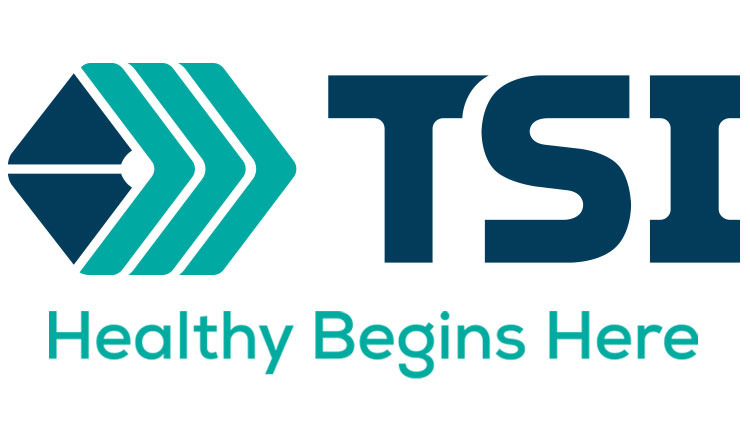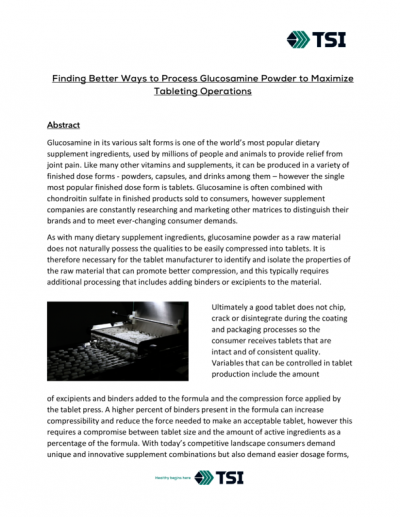Promotional Features
The Value of Experience: Choosing the Right Finished-Dose Partner
To become the beacon in a sea of competition in today’s dietary supplement market, your product needs to deliver its promises and “speak” your consumers’ language. Speed to market is essential as well to capture your audience and begin to obtain the feedback necessary for more precise market positioning.
There is a true plethora of research-backed, patented and high-quality ingredients for every health support focus, but simply working with the ingredients that will comprise your formula isn’t enough. In today’s sophisticated product development market, you need a company that provides innovation – and development expertise -- to deliver the optimal finished dose product in capsules and tablets (the two most popular forms).
Research is driving higher levels of sophistication and complexity of dietary supplements which are viewed as health-supporting solutions rather than supplements. This gives rise to greater expectations of product quality and performance – especially during a pandemic when consumers are relying on health-support products more than ever. Post-pandemic, this consumer behavior is expected to continue as pre-pandemic supplement use had been quickly expanding.
As such, the technical ability to ensure tablets and capsules that present as consumers expect – easy-to-swallow and not too large – is required when the supply chain can be marked by disruptions. The basis of both tablets and capsules is dry ingredients. It’s the quality of how the powder is processed that makes the difference in many ways.
Overcoming Production Challenges
The basis of a common challenge for tablets is that tablet manufacturers will often use particle size distribution of the raw material as an indicator of compressibility, but this is not always a direct correlation. Rather than taking a minimum particle size distribution (PSD) spec and then adding the inactive ingredients to achieve an acceptable tablet, they should instead rely on the raw material manufacturer to ensure that the product is compressible and will hold up with minimal addition of excipients like MCC.
Another issue is that the compressibility of some raw materials is not always consistent even if it is within the PSD spec. The current industry practice where DC granules are measured by PSD does not fully reflect suitable compressibility for tableting. The granules should exhibit high compressibility because PSD alone creates a variability that can have significant impact on operational efficiencies and outcomes.
Another popular finished dose form is capsules. Manufacturers may prefer to make capsules based on the perception that these can be made with raw materials in a standard powder form. Capsule production however presents its own challenges: powder that is dense enough to fit into the capsule may not flow freely enough for the production equipment to function properly. Powder that flows freely may not be dense enough to fit in the capsules, leading to broken pins on the encapsulating equipment or compromises on the formulation. A specific formulation that optimizes density and flow will address these issues.
From a consumer perspective there are pros and cons of both tablets and capsules, and brands would prefer to choose what form their supplements will take based on their product, target market, and cost to produce. Manufacturers who can expand the options available in either dosage form are best positioned to serve the market.
As the supplement market continues to see both new ingredients (products) and new consumers, other dosage forms will continue to develop to address consumer demand from all segments. It makes sense that each of these presents challenges to how the raw materials are processed before being combined into formulas.
To address these demands finished-dose producers may choose to contract third-party processors that can create custom granulations; however, doing so will increase costs of shipping and handling as well as processing. Additional handling may be avoided by processing in-house as an added step in their production, but this requires building and maintaining a capacity that will meet their demand or else risk creating a bottleneck in production. Both in-house and third-party processors are viable options and are commonly used, despite their drawbacks.
There are other hurdles, however that may not be immediately evident with either strategy. Increasing demand for newer and more convenient dosage forms of supplements will drive demand for tighter specifications on all raw materials. This demand exists across the demographic spectrum – from seniors who want smaller tablets and capsules to millennials who prioritize convenience.
Therefore, staying ahead of, or even just keeping up with the trends, requires intimate knowledge of the raw material, of finished-dose manufacturing, and the capacity to keep up. Third-party processors handle a diverse range of products, limiting their ability to provide intimate knowledge of any one ingredient. They are also not experienced in finished-dose manufacturing.
In addition, anyone hiring a third-party processor will be competing for capacity with virtually every supplement ingredient that is under the same pressure for newer and more convenient dosage forms. In-house processing by a company with expertise in finished-dose manufacturing means doing the research on raw material processing to stay ahead of the trends even though this is not their strength.
Ingredients in their optimal form can solve or prevent any potential major technical aberrations in the process of manufacturing any finished dose – and will allow your formula to be delivered intact and perform as the consumer expects.





